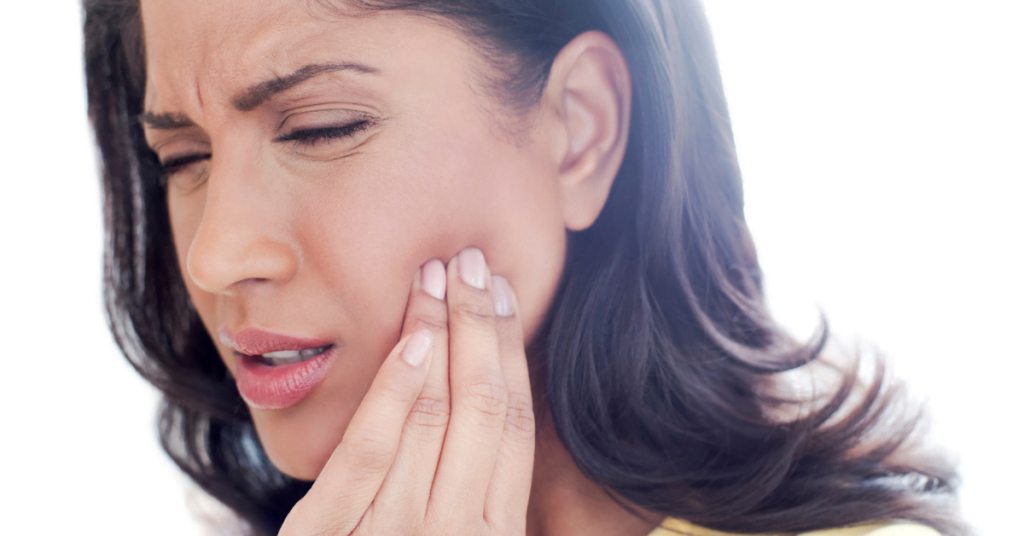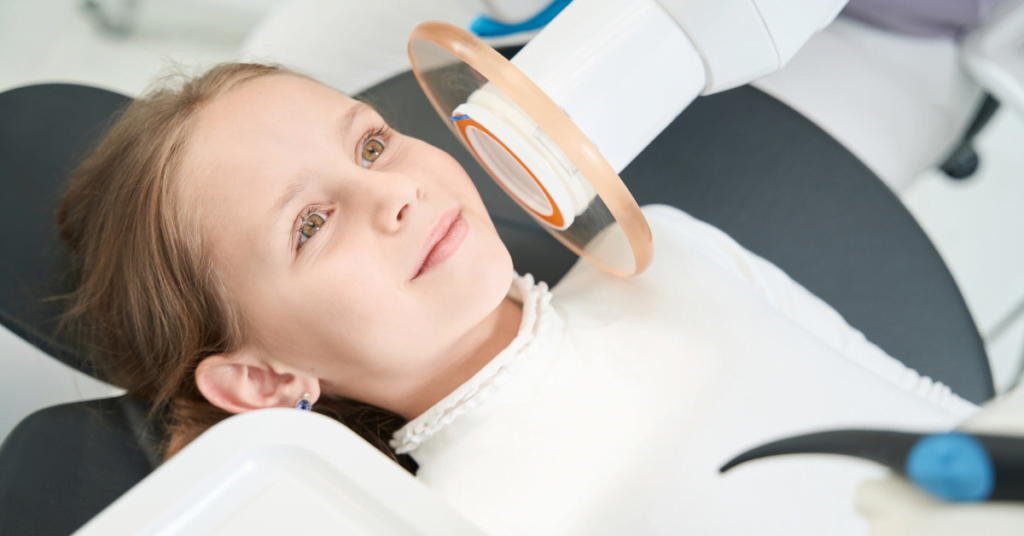Unmasking TMJ: Beyond Just Jaw Pain
TMJ Defined
Temporomandibular Joint Disorder, often shortened to TMJ, is a condition that affects the joint connecting the jaw to the skull. For many, it’s a term heard in passing, commonly associated with fleeting jaw discomfort. However, the depth and breadth of this disorder span far more than the casual observer might realize. While traditional treatments have provided relief for some, there’s a contemporary approach that’s gaining traction: Botox. Often associated with cosmetic enhancements, Botox has found a therapeutic niche in TMJ treatment. In this blog, we’ll delve deep into the relationship between TMJ and Botox, exploring its efficacy, benefits, and what patients can expect. Join us as we unravel the transformative potential of Botox in the realm of TMJ relief.
A Spectrum of Symptoms
While TMJ is primarily known for jaw pain, its range of symptoms is extensive. Patients often report headaches that can be mistaken for migraines, earaches that aren’t related to an ear infection, and ringing in the ears. There’s also pain while chewing, a clicking or popping sound when opening or closing the mouth, and even a grating sensation when using the jaw. In more severe cases, the jaw can lock, making it difficult to open or close the mouth.
The Emotional and Psychological Impact
Beyond the physical symptoms, TMJ can also exact a heavy emotional toll. Constant pain can lead to irritability, a lack of focus, and even depression. The inability to enjoy meals, speak without discomfort, or even sleep due to pain can diminish the quality of life. Social interactions can also become strained, with sufferers feeling self-conscious about their condition or avoiding social situations to prevent exacerbating their symptoms.
TMJ’s Connection to Other Conditions
Interestingly, TMJ often doesn’t exist in isolation. Many patients with this disorder also suffer from other conditions such as sleep apnea, chronic fatigue syndrome, and fibromyalgia. This interconnectedness hints at a complex web of causative factors and effects that the medical community continues to study and unravel.
TMJ, though commonly distilled down to mere ‘jaw pain’, is a multifaceted disorder with wide-ranging implications for those affected. Recognizing its broader impact is the first step toward understanding, empathy, and effective treatment. It is far more than a fleeting discomfort; it’s a condition that demands attention, understanding, and comprehensive care.

The Underlying Causes of TMJ
When diving into the world of Temporomandibular Joint Disorder (TMJ), one of the first questions that arises is, “What causes it?” TMJ is not merely a surface-level discomfort; it’s rooted in a myriad of potential causes that can range from physical trauma to daily habits.
1. Trauma to the Jaw or Joint
Physical injury is a straightforward cause. A direct blow or trauma to the jaw, temporomandibular joint, or muscles of the head and neck can lead to TMJ. Such trauma can result from sports injuries, car accidents, or even a severe fall. When the joint is disrupted or displaced, it can lead to the onset of TMJ symptoms.
2. Arthritis
Arthritic conditions can also affect the temporomandibular joint. Both osteoarthritis (the common “wear-and-tear” arthritis) and rheumatoid arthritis (an autoimmune inflammatory disorder) can cause degradation of the joint, leading to pain and movement issues characteristic of TMJ.
3. Dental Misalignment
Misalignment of the teeth or jaw, often referred to as malocclusion, can place undue pressure on the joint. Over time, this misalignment can cause the joint to wear down or function improperly, sparking TMJ symptoms.
4. Habitual Grinding or Clenching
Bruxism, the medical term for grinding or clenching the teeth, is a significant contributor to TMJ. Often occurring unconsciously during sleep, this habit can overwork the joint’s muscles and cause inflammation. Over time, the repetitive stress can cause wear and tear on the joint itself.
5. Autoimmune Diseases
Some autoimmune diseases can cause inflammation in the temporomandibular joint, leading to TMJ. In these cases, the body’s immune system mistakenly targets and damages its tissues, including those of the TMJ.
6. Infections
Though less common, infections can sometimes impact the temporomandibular joint, leading to TMJ symptoms. When bacteria infiltrate the joint, they can cause inflammation, pain, and other TMJ-related issues.
7. Poor Posture
Habitual poor posture, especially in the neck and upper back, can lead to neck strain and abnormalities in jaw function. This strain can indirectly contribute to TMJ pain and dysfunction.
The causes of TMJ are as diverse as the symptoms themselves. For many patients, a combination of factors can contribute to the development of the disorder. Understanding these underlying causes is pivotal in devising effective treatment plans and preventive measures. Addressing TMJ often means delving deep into a patient’s medical history, habits, and lifestyle to uncover the root of their discomfort.

Botox: Beyond the Facade of Aesthetics
While the name Botox is universally synonymous with youthful skin, wrinkle-free foreheads, and age-defying beauty, its applications run much deeper. We’ve seen it grace the headlines for its cosmetic wonders, but this versatile treatment has myriad other uses that transcend the realm of aesthetics. Venturing beyond its famed cosmetic reputation, Botox has proven to be a medical marvel in various therapeutic avenues.
1. Neuromuscular Disorders
At its core, Botox is a neuromodulator, derived from the botulinum toxin. This means it can influence nerve impulses. Consequently, it has been successfully used to treat a range of neuromuscular disorders. Conditions like blepharospasm (uncontrolled blinking), strabismus (crossed eyes), and cervical dystonia (neck muscle contractions) have seen therapeutic benefits from Botox treatments.
2. Chronic Migraines
For those suffering from chronic migraines, Botox can be a beacon of relief. Administered at specific points, Botox injections can reduce the frequency of these debilitating headaches, offering sufferers a better quality of life.
3. Hyperhidrosis
Hyperhidrosis, or excessive sweating, can be an embarrassing and challenging condition to manage. Botox has emerged as an unexpected yet effective treatment, particularly for axillary hyperhidrosis (excessive underarm sweating). By blocking neurotransmitters that stimulate sweat glands, Botox can drastically reduce sweat production in treated areas.
4. Overactive Bladder
An overactive bladder can greatly affect one’s daily life, but Botox has provided a respite for many. By relaxing the bladder muscle, Botox helps in increasing its storage capacity and reducing episodes of urinary incontinence.
5. Spasticity and Muscle Stiffness
Muscle stiffness related to conditions like multiple sclerosis or following a stroke can be alleviated using Botox. By inhibiting the release of acetylcholine, Botox helps relax muscles and reduce spasticity, offering patients improved mobility and comfort.
6. Temporomandibular Joint Disorders (TMJ)
TMJ disorders, which affect the jaw joint, can lead to pain, difficulty chewing, and even headaches. Botox injections in the jaw muscles can relieve these symptoms, providing a non-surgical option for treatment.
The scope of Botox extends far beyond its renowned cosmetic applications. Its therapeutic potential continues to be a subject of research and exploration, with new uses being discovered regularly. As the medical community delves deeper into the multifaceted benefits of Botox, we come to recognize it not just as a beauty enhancer but as a medical powerhouse capable of improving countless lives.

The Therapeutic Mechanism of Botox for TMJ
Temporomandibular Joint (TMJ) disorders represent a spectrum of conditions that affect the jaw joint and surrounding muscles, causing discomfort, pain, and sometimes debilitating symptoms. Over the past few years, the use of Botox in addressing these disorders has gained significant traction. To fully understand how this treatment works, it’s essential to delve into the therapeutic mechanism of Botox when used for TMJ.
1. Neuromuscular Blocking Agent
At its fundamental level, Botox is a neuromuscular blocking agent. It’s derived from botulinum toxin type A, a potent neurotoxin. When injected into specific muscles, Botox acts by blocking the release of acetylcholine, a neurotransmitter responsible for triggering muscle contractions. This leads to muscle relaxation.
2. Targeting the Masseter and Temporalis Muscles
For TMJ treatments, Botox is typically injected into the masseter (a prominent jaw muscle) and sometimes the temporalis muscles. These muscles are often overactive in people with TMJ disorders, leading to jaw tension, pain, and even changes in jawline appearance. By relaxing these muscles, Botox helps reduce the associated discomfort and other symptoms.
3. Alleviating Pain and Discomfort
The direct relaxation of the jaw muscles results in decreased tension and strain on the temporomandibular joint itself. This eases the discomfort experienced by many TMJ sufferers. Additionally, Botox has been shown to have analgesic effects, meaning it might directly reduce pain beyond just muscle relaxation.
4. Reducing Bruxism and Teeth Grinding
Bruxism, or nighttime teeth grinding, is a significant contributor to TMJ disorders. By weakening the overactive jaw muscles slightly, Botox can reduce the force of nocturnal teeth grinding, thereby decreasing wear on the teeth and strain on the jaw joint.
5. Longevity of the Treatment
Once administered, the effects of Botox for TMJ typically last between three to six months. As the Botox effects wane, muscle activity gradually returns, and so a repeated treatment might be necessary to maintain symptom relief.
6. Preventing Chronic Changes
Chronic TMJ disorders, if left untreated, can lead to permanent changes in the jaw structures and even the development of osteoarthritis in the joint. By providing relief and reducing muscle overactivity, Botox can play a role in preventing these more severe long-term complications.
The use of Botox for TMJ represents a convergence of aesthetic medicine with therapeutic interventions. Its ability to relax overactive muscles presents a minimally invasive option to address the pain and discomfort associated with TMJ disorders. As with any medical treatment, a thorough consultation with a qualified healthcare provider is essential to determine suitability and ensure the procedure is carried out safely and effectively.
Administration and Treatment Duration
Botox has revolutionized various therapeutic areas, with its application extending beyond aesthetic treatments. When it comes to TMJ disorders, Botox provides relief by addressing the muscular causes of the problem. However, the administration of this treatment and its duration warrant a detailed understanding to ensure optimal results and patient satisfaction.
1. The Administration Process
- Initial Consultation: Before undergoing any treatment, a thorough consultation is crucial. This involves understanding the patient’s symptoms, medical history, and ensuring they are the right candidate for Botox therapy.
- Targeting the Right Muscles: The success of Botox in treating TMJ largely depends on the accurate identification of overactive muscles, typically the masseter and sometimes the temporalis.
- Injection Procedure: Utilizing a fine needle, Botox is injected into the identified muscles. The procedure is relatively quick, often taking less than 30 minutes.
- Minimally Invasive: No surgery or general anesthesia is required. Some patients might experience a slight pinch or discomfort during injection, but this is typically minimal and short-lived.
- Post-procedure Care: Post-injection, patients are advised to avoid massaging the area or lying down for about 4 hours. This ensures the Botox remains in the targeted area and doesn’t spread to adjacent muscles.
2. Treatment Duration and Frequency
- Onset of Results: The effects of Botox are not immediate. Patients typically begin to notice a reduction in their TMJ symptoms within 3-7 days post-injection.
- Peak Effects: Maximum relief is usually experienced around two weeks following the treatment.
- Duration of Effectiveness: The relief provided by Botox for TMJ disorders lasts between three to six months, depending on individual factors such as the patient’s metabolism, the severity of muscle activity, and the exact dosage used.
- Maintenance Treatments: As the effects begin to diminish, repeated treatments are necessary to maintain symptom relief. Over time, with consistent treatment, some patients find that they can extend the duration between injections as their muscles adapt and require less frequent interventions.
3. Personalized Treatment Plans
It’s important to note that the exact dosage and frequency of Botox injections for TMJ will vary from one individual to another. Tailoring the treatment to the patient’s unique needs ensures optimal results and reduces potential side effects.
The administration of Botox for TMJ disorders offers a promising, non-surgical approach to managing pain and discomfort. By understanding the procedure and treatment duration, patients can set realistic expectations and work collaboratively with their healthcare provider to achieve the best outcomes. Remember, as with any medical intervention, it’s imperative to consult with a trained and experienced professional when considering Botox for TMJ or any other condition.

Clinical Outcomes: Embracing the Change
The effectiveness of any treatment is best demonstrated through clinical outcomes and the tangible impact on patients’ lives. When it comes to Botox for TMJ, a surge in positive clinical outcomes has placed this treatment in the spotlight, reaffirming its potential in addressing a condition previously known for limited treatment options.
1. Significant Pain Reduction
One of the most compelling outcomes observed in patients treated with Botox for TMJ is the notable reduction in pain. Numerous studies have recorded a marked decrease in pain scores post-treatment. This relief is particularly evident in those who had been experiencing chronic TMJ pain, suggesting that Botox directly targets and alleviates the root cause of discomfort.
2. Improved Jaw Mobility
Restricted or painful jaw movement can be a significant hindrance in daily activities such as speaking, eating, or yawning. Post-Botox treatment, many patients have reported an enhanced range of motion, allowing them to perform these everyday tasks with greater ease.
3. Decreased Muscle Tension
The primary mechanism of Botox is muscle relaxation, which is especially relevant to TMJ caused by excessive muscle tension or spasms. Clinically, there’s a clear indication that Botox can effectively reduce these muscle tensions, directly addressing one of the main contributors to TMJ.
4. Reduction in Associated Symptoms
Beyond the primary symptoms of TMJ, many patients suffer from secondary issues such as headaches, neck pain, or even earaches. Botox’s holistic approach to treatment has shown promise in not only tackling the primary TMJ symptoms but also significantly reducing these associated discomforts.
5. Patient Satisfaction and Quality of Life
Perhaps one of the most telling indicators of success is patient feedback. An overwhelming majority of those treated with Botox for TMJ have expressed satisfaction with the results. This positive feedback extends beyond just symptom relief; many patients highlight the enhancement in their overall quality of life, from better sleep to increased daily functionality.
Incorporating these clinical outcomes, it becomes evident that Botox offers a genuine and impactful solution for those grappling with TMJ. By directly addressing the root causes and providing substantial relief, Botox is redefining how TMJ is approached and treated in the medical community.

TMJ and Botox Safety, Side Effects, and Aftercare
When contemplating any medical treatment, understanding the associated safety protocols, potential side effects, and the requisite aftercare measures is paramount. With Botox for TMJ disorders, this knowledge allows patients to make informed decisions, ensuring a more seamless and satisfactory experience.
1. Safety of Botox for TMJ
- FDA Approval: While Botox has been FDA-approved for various medical and cosmetic uses, its use for TMJ disorders is considered “off-label.” However, many medical treatments are utilized off-label when supported by clinical experience and scientific research.
- Expertise Matters: The safety of the procedure significantly depends on the expertise of the administering physician. It’s essential to choose a practitioner experienced in using Botox for TMJ to ensure precise muscle targeting.
- Research and Studies: Multiple studies have supported the safety and effectiveness of Botox in alleviating TMJ symptoms, showcasing positive outcomes with minimal adverse reactions.
2. Potential Side Effects
Though Botox has a commendable safety profile, potential side effects can occur:
- Local Reactions: These can include redness, swelling, or slight pain at the injection site. These reactions typically resolve within a few hours to days.
- Bruising: Some individuals might experience minor bruising, which fades naturally over time.
- Muscle Weakness: Incorrect administration can lead to unwanted muscle relaxation in areas adjacent to the injection site.
- Flu-like Symptoms: Rarely, patients might experience fatigue, headache, or flu-like symptoms post-treatment.
- Difficulty Swallowing: In rare cases, patients have reported difficulty swallowing, which necessitates immediate medical attention.
- Allergic Reactions: Allergic reactions to Botox are exceedingly rare but can manifest as rash, itching, or difficulty breathing.
3. Aftercare and Precautionary Measures
To optimize results and minimize potential side effects, certain aftercare measures are recommended:
- Avoid Touching the Area: Refrain from touching, massaging, or applying pressure to the injected area for at least 4 hours post-treatment to prevent Botox from migrating to unintended muscles.
- Stay Upright: It’s advisable to remain upright and avoid lying down for about 4 hours post-injection.
- Avoid Strenuous Activity: Steer clear of vigorous activities or exercises for 24 hours post-treatment.
- Limit Exposure: Protect the treated area from excessive sunlight or heat until any initial swelling or redness has subsided.
- Report Any Unusual Symptoms: Should any unexpected or prolonged side effects occur, it’s crucial to contact the administering physician promptly.
Botox, when administered correctly for TMJ disorders, boasts a robust safety profile. However, as with any medical intervention, awareness of potential side effects and following aftercare guidelines is crucial. Ensuring the procedure is performed by a seasoned professional further guarantees safety and effectiveness. Always be proactive in discussing any concerns with your healthcare provider to ensure the best outcomes.

In Conclusion: Botox and TMJ – The Way Forward
The field of medicine is replete with innovations, continually evolving to present solutions that not only combat health issues but also improve the quality of life. Within this realm, the application of Botox for TMJ disorders represents a prime example of how treatments, initially designed for one purpose, can be repurposed to address other pressing medical concerns.
TMJ disorders, characterized by pain and dysfunction of the jaw joint and surrounding muscles, have long posed challenges in terms of effective and long-lasting treatment. Traditional interventions, ranging from oral appliances to pain medications, provide relief to many, yet a segment of patients continues to seek alternative, more enduring solutions.
Botox, synonymous with aesthetic enhancements, has emerged as a beacon of hope for many TMJ sufferers. Its ability to relax hyperactive muscles presents a unique mechanism of action, targeting the root cause of TMJ pain for many individuals. The muscle-relaxing effects not only alleviate pain but also reduce the associated symptoms like headaches, neck aches, and even earaches that often accompany TMJ disorders.
As with any medical treatment, the efficacy of Botox for TMJ largely hinges on the expertise of the administering professional. It’s imperative that patients seek practitioners who are well-versed in this specific application of Botox, ensuring that the treatment is both safe and effective.
Moreover, as research progresses, there’s hope that further advancements will be made in this field. Continued studies might reveal more about the long-term effects of Botox on TMJ disorders, potentially paving the way for FDA approval and making the treatment more accessible to a broader audience.
It’s also crucial for patients to remember that while Botox presents a promising treatment avenue, it is not a one-size-fits-all solution. A multidisciplinary approach, integrating Botox with other therapeutic interventions, may often yield the best results.
The intersection of Botox and TMJ treatment underscores the adaptability of medical science. It’s a testament to the relentless pursuit of better solutions, even when they come from unexpected quarters. As we move forward, this convergence of aesthetics and therapeutic relief promises to offer respite to countless individuals, heralding a new era in TMJ management.


